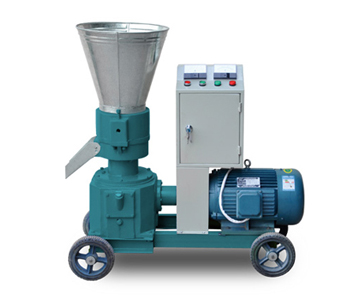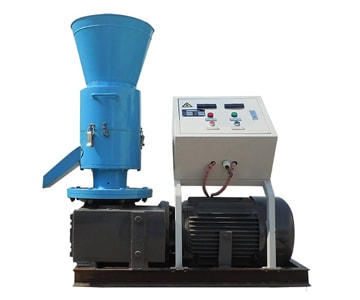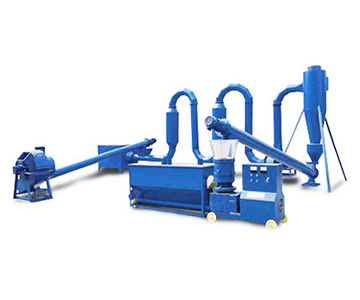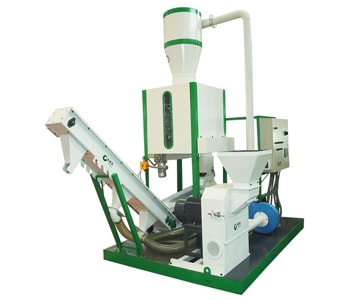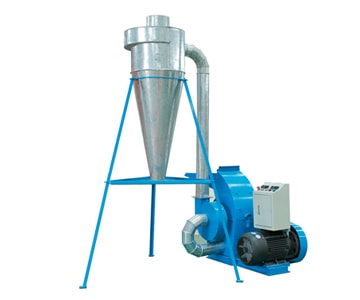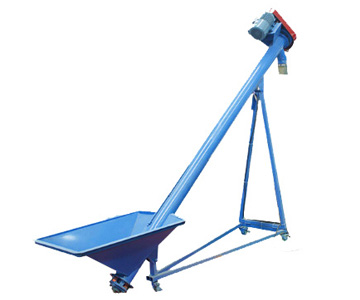Calorific value of different wood pellets
As a clean and renewable energy, biomass energy can reduce our reliance on fossil fuel and relieve air pollution. Compared with coal and diesel, biomass energy has such advantages as renewability, high calorific value, low pollution, zero carbon emission, high density. Generally, biomass energy are utilized in such forms: biogas, ethyl alcohol, biodiesel, and biomass molding fuel.
Owing to low cost and easy processing, biomass molding fuel become popular in farms, homes and rural areas. Biomass molding fuel has two forms, biomass briquette and wood pellets. With smaller size and higher density, wood pellets are easier to burn and more convenient to use, so it is more popular. The diameter of biomass pellets are 6-8mm, the length is less than 10mm, the density is 1.1-1.3 t/m3, the ash content is 1%-2%, and the moisture content is less than 10%.
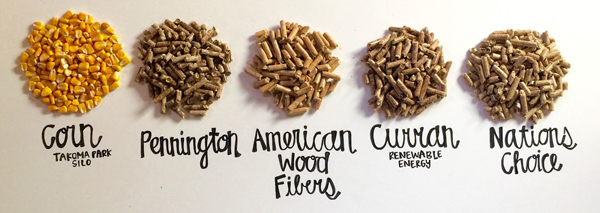
Calorific value of wood pellets
Calorific value is an indicator of wood pellets quality. It means the amount of heat released by a unit mass (or volume) of fuel in full combustion. The calorific value of wood pellets refers to the heat released by 1kg wood pellets. In average, the calorific value of wood pellets is 4400±100Kcal/Kg, but it varies with different materials.
What influences the calorific value of wood pellets?
In a word, the calorific value of wood pellets is determined the raw materials they are made of. The organic substance like lignin, cellulose, starch, protein and fat are varied in different plants and different part of a plant. Besides, the environment factors like climate, soil, temperature influence the growing of plants.
Many people believe the calorific value of wood pellets is affected by the density and hardness. In fact, density refers to the weight per unit volume, while calorific value refers to the released heat per unite weight. The density of wood pellets have nothing to do with the calorific value. It only affect the volume of wood pellets. For a certain weight of wood pellets, whatever the density is, their height value is the same.

Calorific values of different wood pellets
| Types | raw material source | lower calorific value kcal/kg | Density t/m3 | Ash content % |
|---|---|---|---|---|
| Pine | cedar, spurce, fir | 4300-4500 | >=1.20 | <=0.9 |
| Hardwood | Xylosma, Catalpa, elm | 4500 | >=1.2 | <=0.9 |
| Softwood | poplar, birch | 4300 | >=1.20 | <=1.1% |
| Crop waste | Bean stalk, cotton stalk, peanut shell | 3800 | >=1.15 | <=6.0% |
| corn stalk, rape shoot | 3700 | >=1.15 | <=6.0 | |
| wheat straw | 3500 | >=1.10 | <=7.0 | |
| potato straw | 3400 | >=1.10 | <=7.0 | |
| rice straw | 3200 | >=1.10 | <=8.0 |
Compositions of different biomass materials
| Material | Moisture % | Ash % | volatiles % | Fixed carbon % | calorific value kcal/kg | Sulfur % |
|---|---|---|---|---|---|---|
| weed | 5.43 | 9.10 | 68.27 | 16.40 | 3873 | 0.22 |
| Straw | 3.61 | 12.20 | 67.80 | 19.36 | 4215 | 0.09 |
| Maize stalk | 6.10 | 4.70 | 76.00 | 13.20 | 4241 | 0.11 |
| corncob | 4.87 | 5.93 | 71.95 | 17.25 | 4238 | 0.01 |
| wheat straw | 4.39 | 8.90 | 67.36 | 19.32 | 4429 | 0.07 |
| Peanut shell | 7.88 | 1.60 | 68.10 | 22.42 | 5119 | 0.10 |
| Cedar | 3.27 | 0.71 | 81.20 | 14.79 | 4587 | 0.03 |
| Pine | 6.00 | 0.40 | 79.60 | 17.00 | 4552 | 0.00 |
Calorific value of wood pellets and other fuels

| Fuels |
Average calorific value kcal/kg |
Price Yuan/kg | Heat utilization rate |
Price for heating 1t water to 100℃ |
Pollutant |
|---|---|---|---|---|---|
| raw coal | 4984 | 1 | 0.80 | 25.08 | sulphur |
| crude oil | 9969 | 4.7 | 0.85 | 55.47 | sulphur |
| gasoline | 10268 | 10 | 0.85 | 114.58 | sulphur |
| kerosene | 10268 | 9 | 0.85 | 103.12 | sulphur |
| diesel | 10168 | 8.5 | 0.85 | 98.35 | sulphur |
| liquefied petroleum gas | 11303 | 7.93 | 0.85 | 82.54 | sulphur |
| coke oven gas | 3987kcal/m3 | 7.6 | 0.85 | 224.50 | sulphur |
| electricity |
857 kcal/KWH |
0.5 yuan/KWH |
0.90 | 25.25 | none |
| wood pellets | 4400 | 1 | 0.90 | 25.25 | none |
In conclusion, wood pellets have the following advantages:
- High calorific value, usually around 3800-4600kcal/kg. After carbonization, the calorific value is up to 7000-8000kcal/kg.
- High heat utilization rate. Wood pellets contains carbon of 75-85%, ash content 3-6%, moisture 1-3%, without gangue or other substance that doesn’t generate heat.
- Environmental friendly. Wood pellets contains no sulphur or phosphorus, and there is no SO2 or P2O5 emission in burning. Meanwhile, it is carbon neutral. Burning wood pellets will not cause corrosion to the boiler or not give rise to air pollution or acid rain.
- Clean and convenient. Due to small and uniform size, wood pellets are easy to utilize. It can be fed into the boiler automatically so as to save labor. The ash and slag after combustion is little. It doesn’t take much place. Besides, the wood pellet ashes are high-quality organic potassium fertilizer, which can be applied on farms or in gardens.
We receive enquiries in English, Español (Spanish), Русский язык (Russian), Français (French) and العربية (Arabic). Our professional team will reply to you within one business day. Please feel free to contact us!

